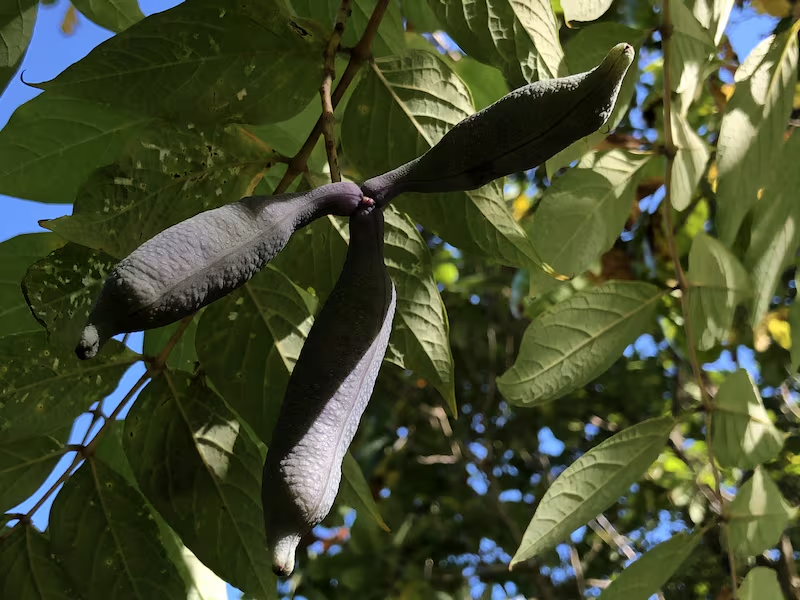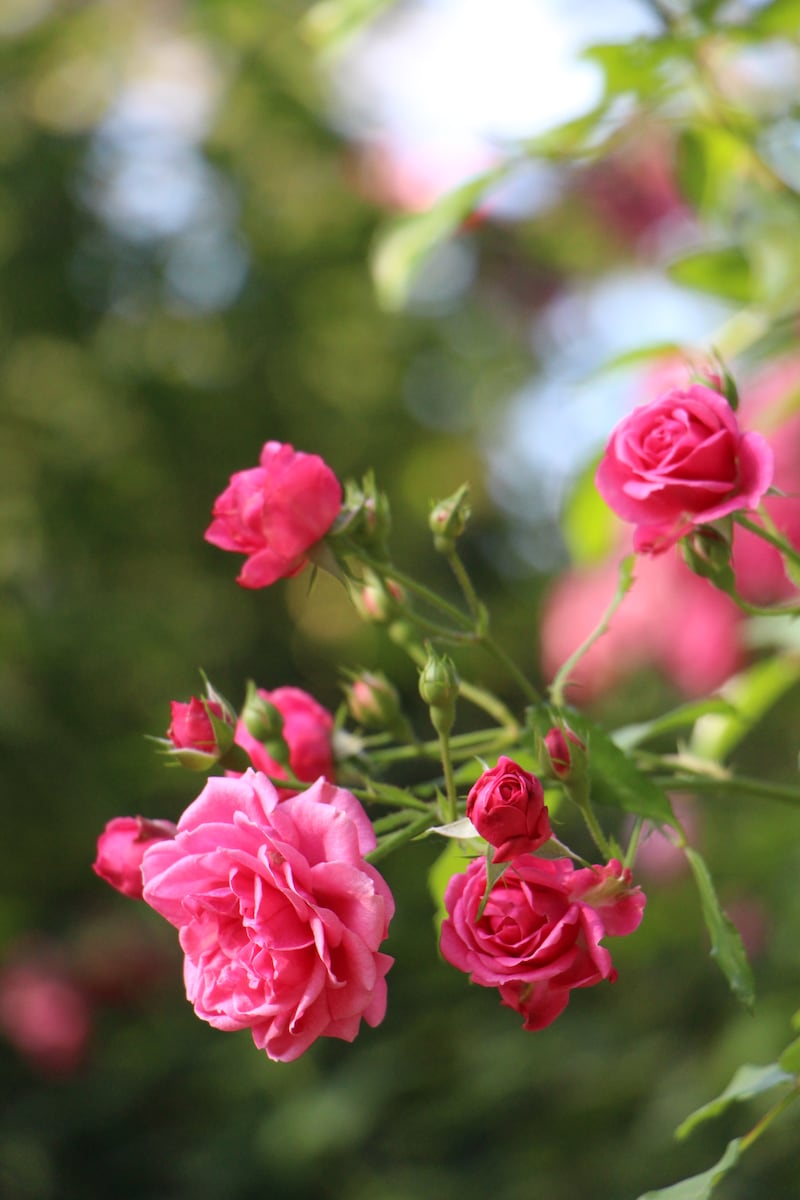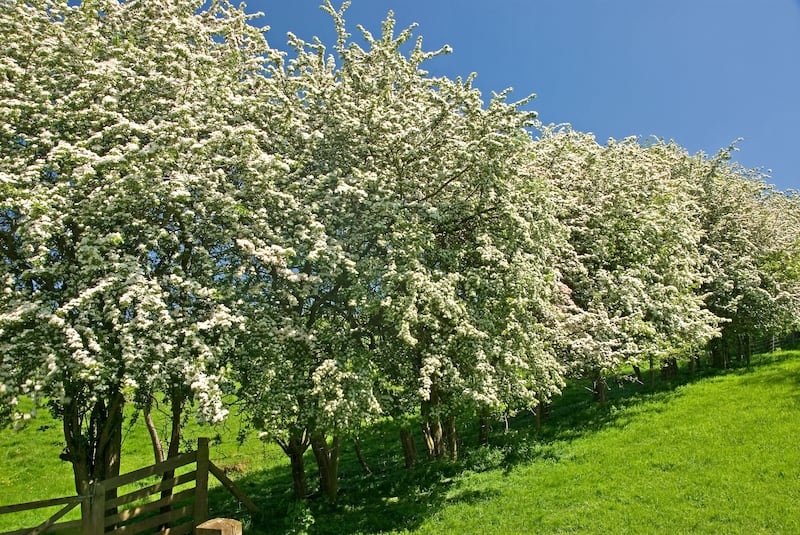As autumn slowly but surely edges summer aside, so starts the season of fruit, seeds and berries. For some, these words will instantly conjure up images of productive kitchen gardens and allotments, of home-grown apples, plums and pears ripening on the trees and wild blackberries swelling in the hedgerows.
But it’s worth bearing in mind that many ornamental species of trees and shrubs also come into their own at this time of year to give an abundance of seasonal interest in our gardens and allotments. In some cases, that display of autumnal beauty can even be the stunning sequel to an earlier, equally beautiful show of flowers.
An outstanding example is the flowering Chinese dogwood, Cornu kousa var chinensis ‘China Girl’, a deciduous hardy shrub or small tree with a truly show-stopping display of snow-white, star-shaped flower bracts in early summer that slowly fade to pink as they age and are followed by a profusion of round, plump, strawberry-pink fruits in autumn. Not only are the latter exceptionally pretty, they can also be used to make a tasty jam.
Add to that its wonderful autumnal show of foliage as its leaves slowly flush to shades of scarlet, crimson and purple, and it’s easy to see why this aristocratic plant is a firm favourite among garden designers. This Dutch-bred variety reaches an average height and spread of just five metres, making it a great choice for smaller gardens just so long as you can give it a fertile, moist but free-draining, acid or neutral soil in either full sun or light shade.

With its common name of “dead man’s fingers”, you’d be forgiven for thinking that Decaisnea fargesii is a shrub to avoid. But in fact it’s a very decorative plant whose graceful panicles of lime-green flowers are followed in autumn by the most extraordinary fleshy, finger-shaped, violet-blue seed pods.
It was discovered growing in western China at the end of the 19th century, and “blue sausage fruit” is one of its other, less macabre common names and an accurate one too. This hardy deciduous shrub grows to a height and spread of three metres, is happy in a sheltered spot in light, dappled shade and likes a fertile, moist but free-draining soil that never entirely dries out in summer.
For the most abundant display of fruits, it’s a good idea to grow more than one plant, but solitary specimens will still put on a great show. The soft, fleshy pulp contained inside its seed pods is also edible (but not the seeds themselves) and is said to taste of watermelon. This plant’s handsome pinnate foliage, which flushes to gold as autumn progresses, is yet another part of its charms.

Roses are another group of plants whose decorative fruits or “hips” are one of the great pleasures of the autumn garden as well as of our native hedgerows at this time of year as they ripen and colour up, flushing to shades of orange, scarlet and red. They are long-lasting. Some will persist until late winter, providing precious colour when it’s most needed. Species particularly prized for their decorative fruits include the compact burnet rose (Rosa spinosissima) whose single, cream-coloured flowers are followed by spherical dark wine-red hips; the well-known Rosa rugosa, a feature of many Irish garden hedges whose white or pink summer flowers are followed by large, plump, bright red/orange-red rosehips; the very vigorous rambling rose, Rosa filipes ‘Kiftsgate’, which produces a profusion of starry, creamy flowers in summer followed by a massed display of tiny, oval, coral-red hips; the charming scarlet-flowered Rosa moyesii ‘Geranium’ with long, large fruits of the same colour; and Rosa macrophylla whose exceptionally large, decorative, tomato-red hips are shaped like lanterns.
Again, the fleshy pulp contained within their hips is edible, but not the seeds themselves, which are difficult to digest so it’s important to sieve the pulp or strain it through a muslin cloth. Their soft flesh is a rich source of various important vitamins and has been used for centuries in Irish folk medicine to make rosehip syrup, a health-boosting winter tonic. You can also make a tasty, colourful jelly from them as well as wine.

Despite the threat of fireblight, the doughty hawthorn genus (Crataegus) is another outstanding genus of shrubby plants, with decorative autumn fruits deserving of a place in most Irish gardens. The lone sceach gheal or fairy tree is capable of tolerating a wide range of soils and less-than-ideal growing conditions, including cold, exposed sites; it has also long been celebrated for its rugged beauty and its place in Irish folklore. Our native species (Crataegus monogyna) is such a quintessential part of the Irish landscape. Several others are known for their pretty spring blossom and exceptionally decorative, long-lasting displays of autumn fruits, or haws as they are commonly known. Examples include Crataegus x lavalleei ‘Carrierei’ (large orange-red berries in autumn); Crataegus pedicellata (blood-red berries); and Crataegus pinnatifida ‘Big Ball’ (exceptionally large, bright red fruits). Again, the fruits are edible and have a long history of use in Irish folk medicine but can also be used to make jellies, jams as well as wine. You can even eat them raw, but just make sure to spit out the stony seed inside. Their fleshy, floury pulp, called ‘food for the heart’, is rich in bioflavonoids long known for their power to support cardiac health. Birds like to eat them too, but generally leave enough to give a long-lasting display.
Other native woody species with similarly decorative autumn berries, such as holly (Ilex); and the mountain ash or rowan tree (Sorbus) are also every bit as nature friendly as they are ornamental, supporting and attracting garden wildlife in ways that only add to our enjoyment of them. If you’ve ever watched a horde of fieldfares drunkenly gorge themselves on rowan berries or listened to the musical chatter of blackbirds congregating in a hawthorn tree at dusk, then you’ll know that it’s all part of the great joy of gardening.
This week in the garden
Collect the seed of many kinds of annuals, biennials, perennials and shrubby plants, with many species ripe and ready for harvesting at this time of year.
Start planting early spring-flowering bulbs in containers for a colourful display early next year, placing them in layers (this is known as the “lasagne method”) with the earliest-flowering variety to the top and the latest flowering variety in the lowest layer, using no more than three layers and covering each layer of bulbs with a layer of potting compost.
Dates for your diary
Sunday, September 15th: Garden Open Day at Fruitlawn Garden, Abbeyleix, Co Laois, R32W5W7, the garden of designer and plantsperson Arthur Shackleton, arthurshackleton.com;
September 21st-October 6th: Mount Venus Nursery Autumn Sale, Mount Venus, The Walled Garden Tibradden, Mutton Lane, Dublin 16, mountvenusnursery.com
Friday-Sunday, October, 4th-6th: Kells Bay Gardens – Southern Symposium IX with an impressive line-up of guest speakers that includes Adam Frost, Scott McMahan, Jimi Blake, Derry Watkins and Raf Lenaerts. Prebooking essential. kellsbay.ie
Wednesday, September 18th: Marine Hotel Sutton, 8pm, How to Grow Cut-Flowers Seasonally & Sustainably, an illustrated talk by Fionnuala Fallon on behalf of Howth & Sutton Horticultural Society. Booking essential. hshs.ie
















